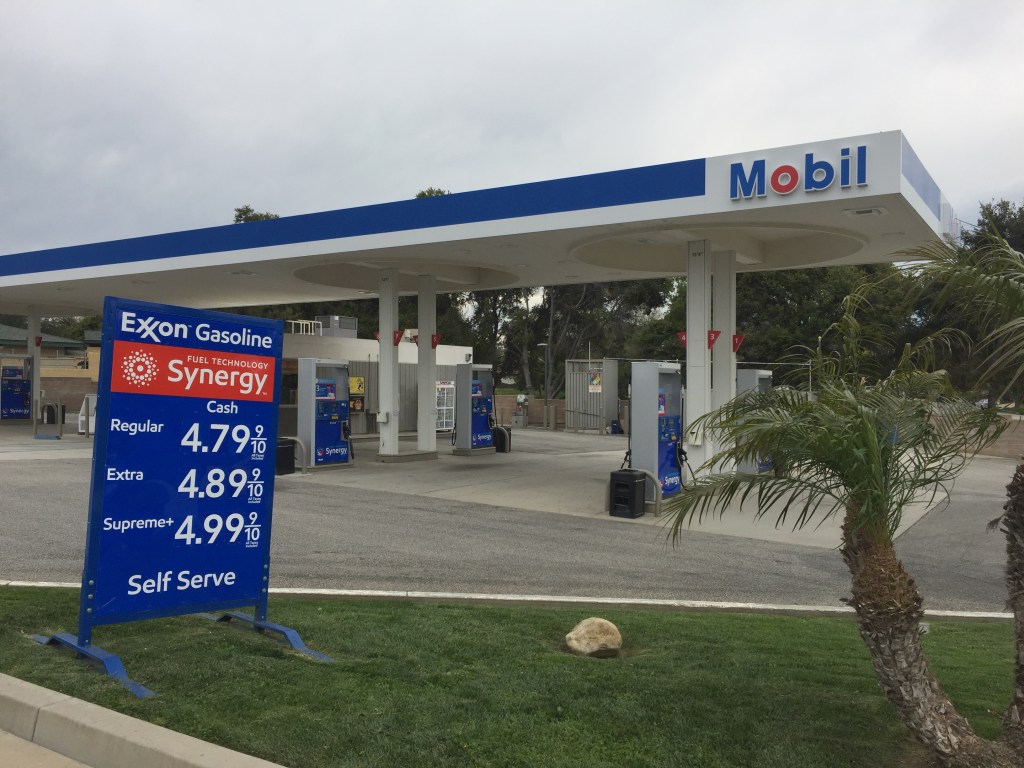UCSB graduate student Jing Xu was driving to the grocery store one day when she stopped at the Mobil gas station on Glen Annie Road and experienced the sticker shock all too familiar to western Goleta residents. The prices were high, extremely high, nearly two dollars above any other gas station in the area. “I was really surprised,” Xu said. “I thought there must be something wrong with the sign.” So she got out of her car and checked the pump. Nope, the sign was right. “How could that be?” Xu wondered.
Thus began a full-blown scientific study of why some stations charge more than others in the same geographic region, and how a few get away with blatant price gouging. Xu teamed up with geography professor Alan Murray for two weeks in 2016 to track the price of regular gasoline at 108 stations throughout Santa Barbara County, and they published their findings this January in the Asia-Pacific Journal of Regional Science. While other researchers have devoted countless studies to the global dynamics of gas pricing — how it’s affected by the cost of crude, trade markets, transportation charges, and so on — this was the first paper to focus specifically on abnormal pricing behavior in a local retail market. It was also the first to examine the phenomenon of price gouging outside of a disaster scenario.
Jing and Murray used what’s called a “spatial analytic framework” to determine how the locations of pumps might influence their prices and if there was any predictability to the cost variations. They looked at land zoning, socioeconomic conditions, and the concentration of competing stations, as well as the stations’ proximity to highways, schools, and business districts. “People are really interested in this because it’s a local issue,” said Xu, who recently presented her paper at a conference and incorporated the results — some of which were intuitive, while others were quite surprising — into her master’s thesis. Here’s what she found:
- The average price per gallon of gas in Santa Barbara County was $2.87. The highest was $4.79
- Higher gas prices were predicted by brand-name fuel, proximity to highly trafficked areas (i.e., shopping centers and downtown corridors), freeway on- and off-ramps, and the interfaces between urban and rural areas
- Lower gas prices were predicted by rural settings, nearby poverty levels, the presence of a convenience store or car wash, ownership by a supermarket, and increased concentration of neighboring competitors
- The closer the station to its nearest competitor, the lower the prices at both, indicating potential collusion between them
- The presence of a repair shop, a full-service option, and the number of pumps didn’t affect price
Xu and Murray identified three exceptions to their general rules, who they described as the “gougers” — the Chevron station near the intersection of Highways 154 and 246 in the Santa Ynez Valley, which enjoys almost no competition; the 76 station near the intersection of Carpinteria and Linden avenues in Carpinteria, which is near bars, restaurants, and the beach; and the Mobil station on Glen Annie in Goleta. The Mobil outlier was by far the most dramatic. (In California, price gouging is only illegal if it’s done to take advantage of customers after some kind of public emergency. Other states, including Michigan and Maine, have laws that prevent excessive price points or profits under any circumstances.)
“The Glen Annie Mobil location clearly exploits northbound drivers needing to fill up before the next opportunity in Solvang, Xu said.”
The Glen Annie Mobil location clearly exploits northbound drivers needing to fill up before the next opportunity in Solvang, Xu said, and conversely targets southbound travelers who may be coasting down on fumes. The interchange itself sees almost twice the amount of traffic — 65,600 vehicles per year — compared to the county average. Not only does the station attract shoppers who may be heading to the only Costco and Home Depot in the region, Xu went on, but it also snares young drivers who may not know any better. “You have sort of a captive market,” Murray said in a press statement, referring to its location near Isla Vista, UCSB, and Dos Pueblos High School, where “young drivers maybe don’t appreciate” the discrepancy.
When Xu performed two onsite observations at the Mobil, she noticed that while around 14 cars pulled in per hour, only five of the drivers would actually buy gas. The rest either purchased something at the convenience store or left without buying anything. It was perplexing, she admitted, but suggests Mobil’s corporate office and its onsite manager must be turning enough of a profit with their gouging strategies to not mind the lost business. The station manager declined an interview for this story and corporate didn’t respond to requests for comment. Murray noted that the surrounding neighborhood is relatively less affluent than other areas with more average pricing. He said the study will help illuminate how “this higher, predatory pricing might be impacting certain socioeconomic groups more than others.”
Xu said while her paper focused exclusively on the Santa Barbara gasoline market, its methodology could be applied to any number of disciplines. “The framework can definitely be used in other fields,” she said. It’s drawn a lot of attention among geographers and led to some interesting debate about whether price gouging is unethical or merely a tool to maintain market equilibrium. “We’ve had a lot of interesting discussions,” Xu said.

